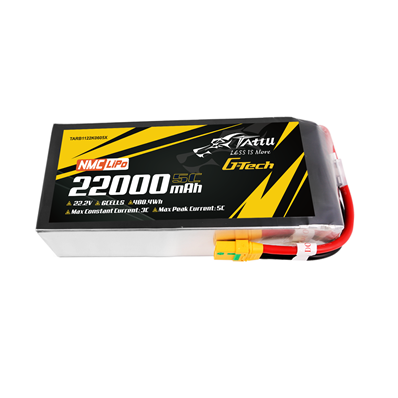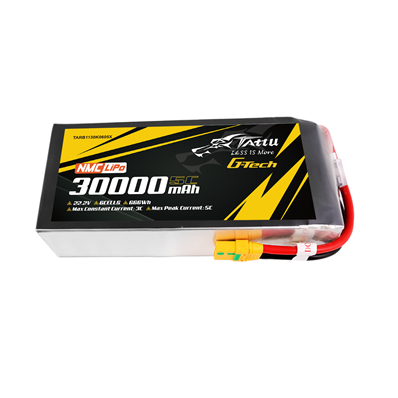What Is a Fixed Wing VTOL Drone?
Fixed-wing VTOL drones represent a significant advancement in unmanned aerial vehicle technology, seamlessly blending the benefits of both fixed-wing and rotary-wing designs. These innovative machines can take off and land vertically, making them ideal for confined spaces, while transitioning to fixed-wing flight for long-distance efficiency. This hybrid capability not only enhances operational versatility across various applications, from urban delivery to surveillance, but also enables extended flight times and greater payload capacities, positioning fixed-wing VTOLs as ultimate tools for a range of industries.
What is a Fixed Wing VTOL Drone?
VTOL (Vertical Take-Off and Landing) drones are unmanned aerial vehicles that can take off, hover, and land vertically. This capability allows them to operate in confined spaces without the need for runways, making them versatile for various applications, from urban delivery to surveillance. A Fixed Wing VTOL drone combines the characteristics of traditional fixed-wing aircraft and rotary-wing drones. It can take off and land vertically like a helicopter but transitions to fixed-wing flight for efficient long-distance travel. This hybrid design enables extended flight times and larger payload capacities while maintaining operational flexibility.

How to Power a Fixed Wing VTOL Drone?
Powering a fixed-wing VTOL drone typically involves using either electric motors or internal combustion engines. Electric motors are common for smaller drones due to their ease of use and lower maintenance requirements, while larger drones may use hybrid systems that combine electric and fuel-based engines for greater range and payload capacity. Here are the primary power classifications for these drones:
1. Electric Power
●Battery-Powered: Most common in smaller VTOL drones. They use lithium-polymer (LiPo) or lithium-ion batteries, providing good energy density and relatively lightweight.
●Hybrid Electric: Combines electric motors with a small internal combustion engine to extend flight time by generating electricity while in the air.
2. Fuel Power
●Gasoline Engines: Common in larger VTOL drones. They provide longer flight durations and greater payload capacities compared to electric options.
●Jet Fuel: Some larger fixed-wing VTOLs, especially those used for commercial or military applications, use jet fuel engines for extended range and performance.
3. Solar Power
Solar Panels: Some fixed-wing VTOL drones incorporate solar panels to supplement their power source, allowing for longer endurance during daylight hours.
4. Hybrid Systems
Multi-Fuel Systems: Some advanced drones can switch between different fuel types or combine multiple power sources to optimize performance based on mission needs.
5. Other Innovative Sources
Hydrogen Fuel Cells: Emerging technology in VTOLs, offering longer endurance and reduced emissions. They convert hydrogen into electricity, powering electric motors.
What is an Electric Fixed Wing VTOL Drone?
An electric fixed-wing VTOL drone operates solely on electric power, using batteries to drive its motors. There are two main types of Electric Fixed Wing VTOL Drones:
●Battery-Powered Fixed Wing VTOL Drone: This type relies solely on batteries for power. It's lightweight and often more environmentally friendly, but its range and flight time are limited by battery capacity. These drones are popular for their environmental benefits, reduced noise levels, and lower operating costs. Innovations in battery technology have made electric VTOL drones increasingly efficient and capable of longer flights.
●Hybrid Fixed Wing VTOL Drone: These drones use a combination of batteries and a fuel cell for their power source. The fuel cell generates electricity through a chemical reaction, while the batteries provide additional power during takeoff, landing, and other high-power maneuvers. This type of drone offers longer flight times compared to pure battery drive drones.
What is a Long Range Fixed Wing VTOL Drone?
Long-range fixed-wing VTOL drones are designed to cover extensive distances without needing frequent recharging or refueling. The range of an electric fixed wing VTOL drones is uaually between 10 to 50 miles (16 to 80 km), and the range of a hybrid fixed wing VTOL drones is often between 50 to 200 miles (80 to 320 km). Generally, long range fixed wing VTOL drone is considered to be over 100 miles (160 km) for VTOL drones, particularly for hybrid models. Some advanced hybrid systems can achieve ranges beyond 200 miles (320 km).
What is a Long Endurance Fixed Wing VTOL Drone?
A long endurance fixed-wing VTOL drone is designed to stay airborne for extended periods, often exceeding several hours of flight time. These drones combine the vertical takeoff and landing capabilities of VTOL with the efficiency of fixed-wing flight, allowing them to cover large areas without frequent recharging or refueling. They are often used for applications like surveillance, environmental monitoring, and long-distance delivery. Typical flight time of electric fixed-wing VTOL drones usually ranges from 30 minutes to 2 hours. Typical flight Time of hybrid electric fixed-wing VTOL drones often ranges from 2 to 12 hours, with some advanced models achieving even longer durations. Long endurance fixed-wing VTOL drone is typically defined as having flight times of 4 hours or more.
What is a Heavy Load Fixed Wing VTOL Drone?
The load weight of fixed-wing VTOL drones can vary significantly based on design, purpose, and whether they are electric or hybrid. Typical load weight range of electric fixed-wing VTOL drones is between 2-50 kg (4.4-110lbs). Typical load weight range of hybrid electric fixed-wing VTOL drones is between 10-100 kg (4.4-220lbs) or more. Generally, any drone that can carry a payload of 25 kg (55 lbs) or more is considered a heavy load. For commercial applications, this threshold can be even higher, with many drones designed to transport significant cargo in the range of 50 kg (110 lbs) and above. Heavy load fixed-wing VTOL drones can transport substantial payloads, often exceeding the capacity of standard drones. They are engineered with robust frames and powerful propulsion systems to handle the added weight, making them ideal for cargo delivery, search and rescue operations, and agricultural applications.
How to Choose a Battery for an Electric Fixed Wing VTOL Drone?
Choosing the right battery for an electric fixed-wing VTOL drone involves considering factors like capacity (measured in amp-hours), weight, discharge rate, and voltage. It's essential to select a battery that meets the drone's power requirements while keeping weight low for optimal performance. Lithium polymer (LiPo) batteries are popular for their high energy density and discharge capabilities.

Grepow offers a semi-solid state battery with a remarkable energy density of up to 320 Wh/kg. This innovative battery supports a voltage range from 6S to 14S and can reach a maximum capacity of 84 Ah, making it well-suited for various applications in electric fixed-wing VTOL drones. Whether for long-range missions, extended endurance flights, or heavy payload transport, this advanced battery technology enhances the performance and versatility of modern drone systems, catering to the increasing demands of the aerospace industry. The following is the Grepow semi-solid state battery pack product model table. If you have any questions or needs, please feel free to contact us at info@grepow.com.
| No. | Capacity | Voltage | Energy Density | Size L*W*H(±5mm) | Weight(±150g) |
| 1 | 16000mAh | 6S1P 22.2V | 275Wh/kg | 50.0*77*193mm | 1540g |
| 2 | 17000mah | 6S1P 22.2V | 300wh/kg | 50.5*72*193mm | 1490g |
| 3 | 22000mah | 6S1P 22.2V | 300wh/kg | 59*77*193mm | 1850g |
| 4 | 25000mah | 6S1P 22.2V | 300wh/kg | 51*92*208mm | 2090g |
| 5 | 30000mah | 6S1P 22.2V | 300wh/kg | 60*92*208mm | 2450g |
| 6 | 70000mah | 6S1P 22.2V | 275Wh/kg | 69*152*289mm | 6030g |
| 7 | 84000mah | 6S1P 22.2V | 300wh/kg | 71*152*289mm | 6440g |
| 8 | 17000mah | 12S1P 44.4V | 300wh/kg | 108.5*72*193mm | 2980g |
| 9 | 22000mah | 12S1P 44.4V | 300wh/kg | 125.5*77*193mm | 3700g |
| 10 | 25000mah | 12S1P 44.4V | 300wh/kg | 110*92*206mm | 4180g |
| 11 | 30000mah | 12S1P 44.4V | 300wh/kg | 128*92*208mm | 4900g |
| 12 | 70000mah | 12S1P 44.4V | 275Wh/kg | 141.0*152*289mm | 12060g |
| 13 | 84000mah | 12S1P 44.4V | 300wh/kg | 149.5*152*289mm | 12880g |
| 14 | 17000mah | 14S1P 51.8V | 300wh/kg | 126.5*72*193mm | 3460g |
| 15 | 22000mah | 14S1P 51.8V | 300wh/kg | 146*77*193mm | 4300g |
| 16 | 25000mah | 14S1P 51.8V | 300wh/kg | 128*92*208mm | 4860g |
| 17 | 30000mah | 14S1P 51.8V | 300wh/kg | 149*92*208mm | 5700g |
| 18 | 70000mah | 14S1P 51.8V | 275Wh/kg | 165*152*289mm | 14060g |
| 19 | 84000mah | 14S1P 51.8V | 300wh/kg | 174.0*152*289mm | 15000g |
Related Articles
-

What Are the Types of Unmanned Aircraft Systems (UAS)?
2025-04-01 -

What Is a Drone Battery Management System and How Does It Work?
2025-03-31 -

4S vs 6S LiPo: What’s the Difference?
2025-03-25
Related products
-

22000mAh 22.2V 6S Semi-Solid State Battery Pack with G-Tech
-

30000mAh 22.2V 6S Semi-Solid State Battery Pack with G-Tech
-

17000mAh 22.2V 6S Semi-Solid State Battery Pack with G-Tech

















































